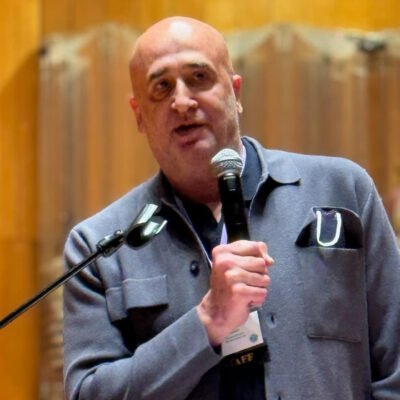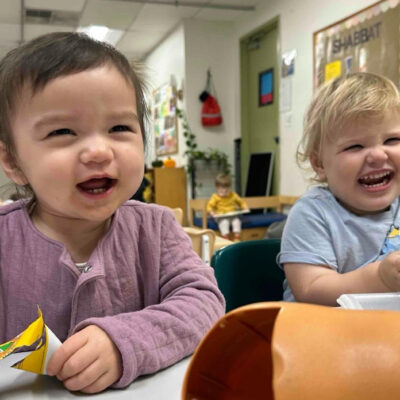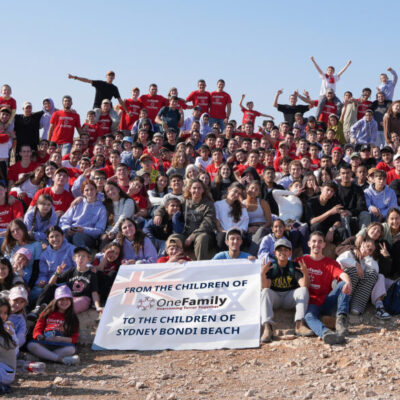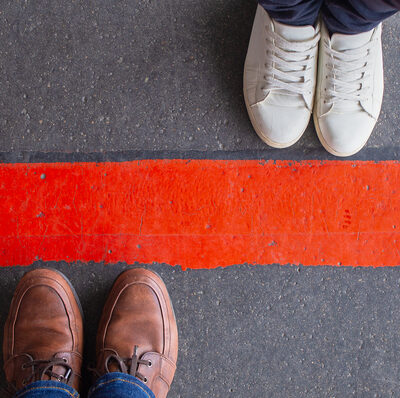How Do We Do “Congregation” in the 21st Century?

By Rabbi Aaron Bisno
My seeking to answer this question 15 years ago led me to become Rodef Shalom’s senior rabbi. And a decade and a half later – and ten years after the contraction of the entire economy, more than seven years after our uniting with Beth Shalom to create J-JEP (our shared religious and Hebrew schools), and in these first months after the tragedy of October 27 – the question is no less significant.
After all, everything we once thought we knew about congregational life has changed. Thus… “How do we do ‘congregation’ in the 21st century?” How, indeed.
Allow me to share some of the ideas that animate my answer to this question…
I envision a Liberal (non-Orthodox) Jewish community in Pittsburgh that does not compete with itself; a polity that, working in concert, always seeks to put the needs of the Jew or Jewish family ahead of that of any given institution itself.
Today, Reform and Conservative congregations are competitors, vying for the same diminishing number of affiliating families. As we work to distinguish ourselves from one another (inevitably diminishing our resources all the while), we perpetuate the fiction that we are distinct entities with divergent goals. Nothing, in point of fact, could be further from the truth.
But, what if we could step outside how we think about the Jewish community? What might we imagine? What if we could take up a courageous and sacred conversation about our future that spoke of things heretofore thought taboo? What if those conversations were for the sake of heaven (“l’shem shamayim”)? And what if, at the same time, these discussions moved us toward what will truly be required as we confront the changes the coming years will bring?
Considering alternative congregational communities and imagining new ways of working together is challenging because the images we hold of ourselves and of one another, both consciously and unconsciously, are powerful.
York University professor of organizational behavior Gareth Morgan, writes that, so long as we maintain in our mind’s eye an image of congregational life best relied upon in yesteryear, we will fail to respond effectively to challenges in real time and will be incapable of developing new ways of organizing ourselves.
However, if we are willing to suspend the images we hold in our mind’s eye of how we believe congregations should look, and we are willing to be open to new patterns of organizing ourselves that better reflect and move us towards what we seek to achieve, then we may, indeed, be successful. It is for this, I pray.
How, then, shall we begin to answer our question?
Let us acknowledge and honor our past, but recognize that what is required now is a courageous, sacred and safe conversation about the future of congregational life in the ‘Burgh. Candor is required and everything must be on the table.
Let us explore all we can realize in full partnership. After all, what we share in common and the strengths we can leverage together are too great to be ignored or minimized. Where we can create excellence (as well as efficiencies and a larger pie) it must be pursued; where there is a surfeit of staff, rabbis or programs, or there are administrative redundancies between the liberal congregations in our area, these must be addressed, planned for and phased out.
What does all this mean? Congregational life is changing and quickly. Thus, this is a plea to all of us who love congregations, that we not miss the opportunity to pool our resources and maximize our outcomes – and to stay ahead of the storm.
After all, in the words of the late Senator Bobby Kennedy, “Our choice is not whether change will come, but whether we can guide that change in the service of our ideals and toward … the needs of all our people.”
How do we do ‘congregation’ in the 21st century?
We do it – all of us – together. Let us begin.
Rabbi Aaron Bisno holds the Frances F & David R Levin Senior Rabbinic Pulpit, Rodef Shalom Congregation, Pittsburgh, Pennsylvania.
This article originally appeared in the Feb. 2019 edition of HaKesher, Rodef Shalom’s quarterly newsletter.

 Add EJP on Google
Add EJP on Google










